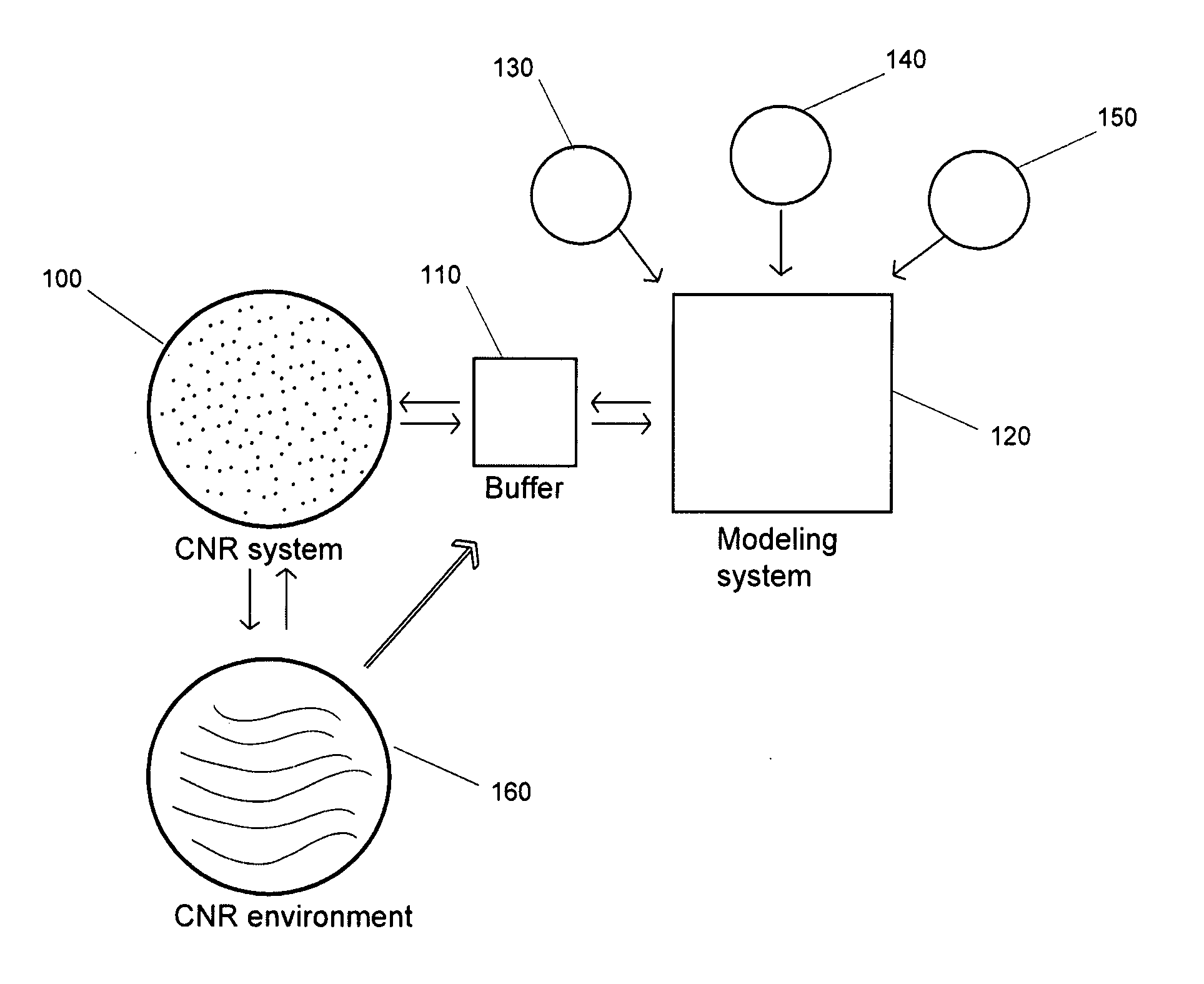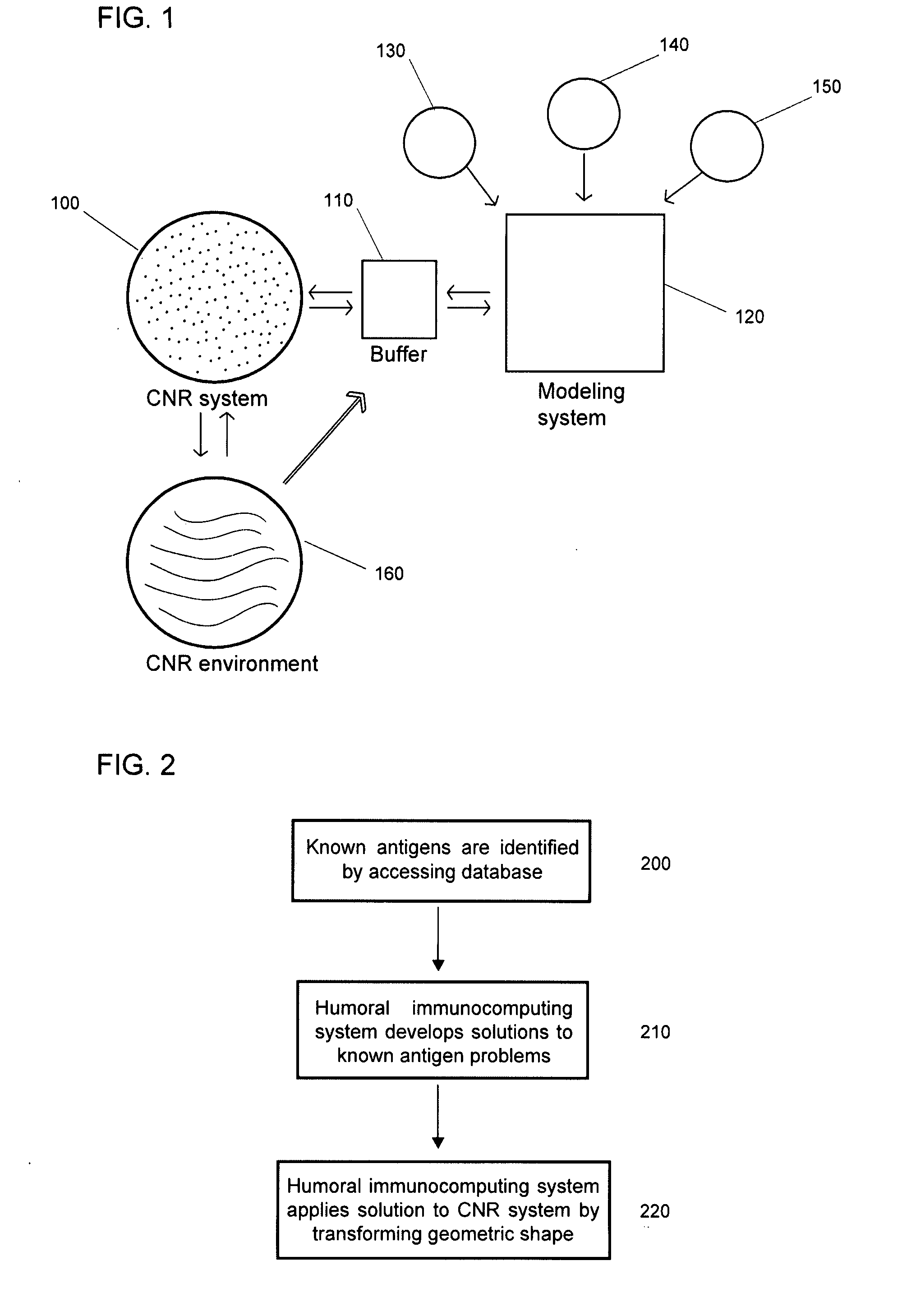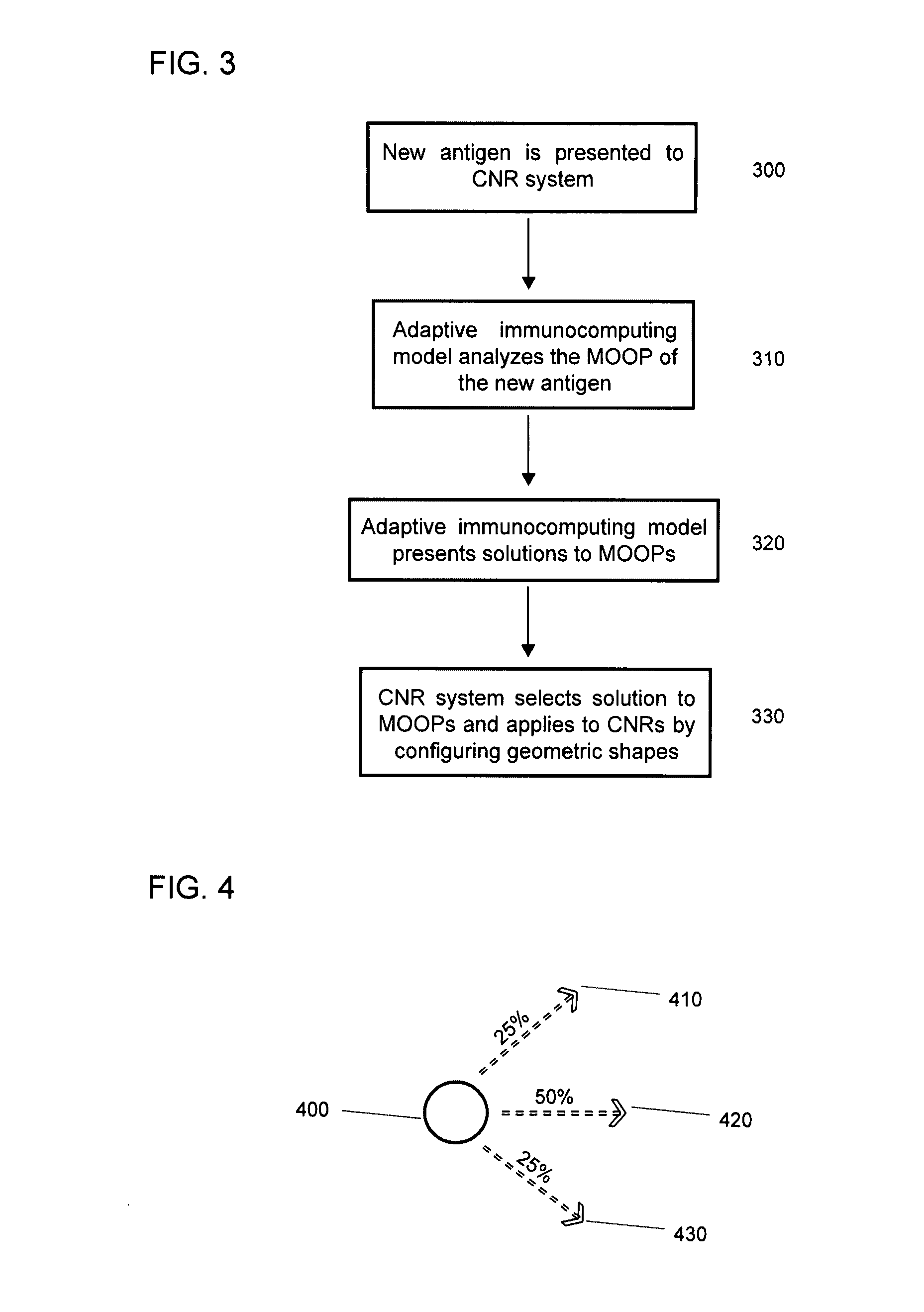System and methods for immunocomputing applied to collectives of nanorobots
a nanorobot and immunocomputing technology, applied in the field of nanoelectromechanical systems and nanotechnology, can solve the problems of not being able to reprogramme, and not being able to achieve the goal of organizing millions of micro-robot entities, etc., to achieve rapid response, improve the natural immune system, and improve the effect of prediction accuracy
- Summary
- Abstract
- Description
- Claims
- Application Information
AI Technical Summary
Benefits of technology
Problems solved by technology
Method used
Image
Examples
Embodiment Construction
(I) Immunocomputing Applied to CNRs
[0031]The biologically inspired computing literature has focused on developing ways to emulate the human immune system. Specifically, there are two main immune systems. First, the humoral immune system produces a cascade of proteins in order to invade a known pathogen after it has been detected. Second, the adaptive immune system identifies hitherto unknown pathogens and develops mechanisms to rapidly attack the pathogens and remember (i.e., learn) the specific genetic code of the pathogens for further identification.
[0032]While the present system will integrate aspects of these two bio-inspired computing mechanisms into the CNR system, it adds two additional analytical immune system feedback and response mechanisms that are applied to the autonomous and self-organizing behaviors of nanorobotic collectives.
[0033]The first original immunocomputing mechanism disclosed in the present system is anticipatory. Anticipatory immunocomputing uses models tha...
PUM
 Login to View More
Login to View More Abstract
Description
Claims
Application Information
 Login to View More
Login to View More - R&D
- Intellectual Property
- Life Sciences
- Materials
- Tech Scout
- Unparalleled Data Quality
- Higher Quality Content
- 60% Fewer Hallucinations
Browse by: Latest US Patents, China's latest patents, Technical Efficacy Thesaurus, Application Domain, Technology Topic, Popular Technical Reports.
© 2025 PatSnap. All rights reserved.Legal|Privacy policy|Modern Slavery Act Transparency Statement|Sitemap|About US| Contact US: help@patsnap.com



